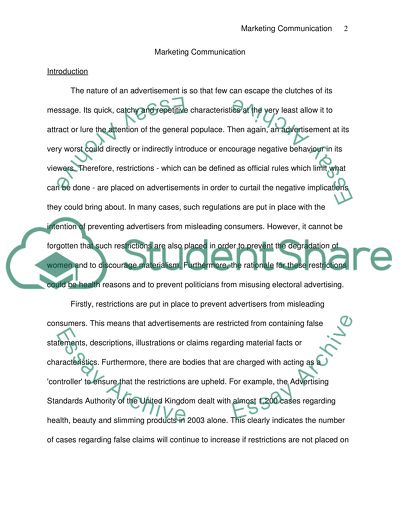Cite this document
(“Marketing Communication Essay Example | Topics and Well Written Essays - 2250 words”, n.d.)
Marketing Communication Essay Example | Topics and Well Written Essays - 2250 words. Retrieved from https://studentshare.org/marketing/1534239-marketing-communication-master-essay
Marketing Communication Essay Example | Topics and Well Written Essays - 2250 words. Retrieved from https://studentshare.org/marketing/1534239-marketing-communication-master-essay
(Marketing Communication Essay Example | Topics and Well Written Essays - 2250 Words)
Marketing Communication Essay Example | Topics and Well Written Essays - 2250 Words. https://studentshare.org/marketing/1534239-marketing-communication-master-essay.
Marketing Communication Essay Example | Topics and Well Written Essays - 2250 Words. https://studentshare.org/marketing/1534239-marketing-communication-master-essay.
“Marketing Communication Essay Example | Topics and Well Written Essays - 2250 Words”, n.d. https://studentshare.org/marketing/1534239-marketing-communication-master-essay.


